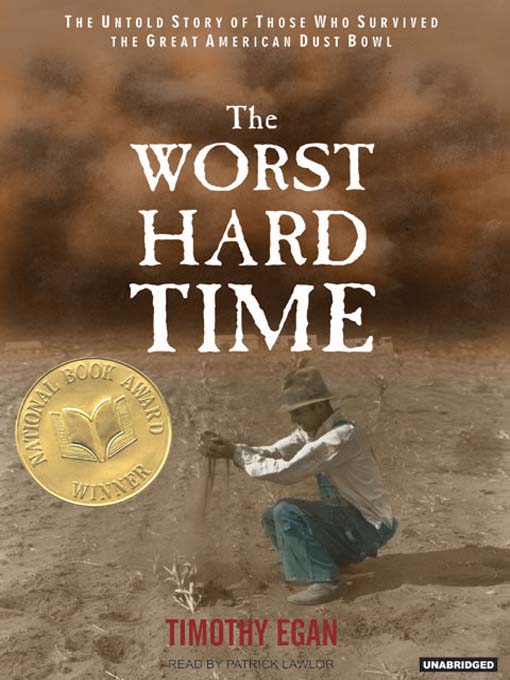
Timothy Egan takes on that task in The Worst Hard Time. If we are not to be doomed to repeat the mistakes that were made before, it is critical that we know what happened then, how it came to be, and what might be done to prevent it, or things like it, from happening again.

There are lessons to be gleaned from that experience that apply directly to challenges of the 21st century. The Dust Bowl of the 1930s is far from public consciousness today, and that is a shame.

How to explain a place where hollow-bellied horses chewed on fence posts, where static electricity made it painful to shake another man’s hand, where the only thing growing that a man or cow could eat was an unwelcome foreigner, the Russian thistle? How to explain fifty thousand or more houses abandoned throughout the Great Plains, never to hear a child’s laugh or a woman’s song inside their walls? How to explain nine million acres of farmland without a master? America was passing this land by. In an era that promises ever-greater natural disasters, The Worst Hard Time is "arguably the best nonfiction book yet" (Austin Statesman Journal) on the greatest environmental disaster ever to be visited upon our land and a powerful cautionary tale about the dangers of trifling with nature. Brilliantly capturing the terrifying drama of catastrophe, Egan does equal justice to the human characters who become his heroes, "the stoic, long suffering men and women whose lives he opens up with urgency and respect" (New York Times).

Following a dozen families and their communities through the rise and fall of the region, Egan tells of their desperate attempts to carry on through blinding black dust blizzards, crop failure, and the death of loved ones. Timothy Egan's critically acclaimed account rescues this iconic chapter of American history from the shadows in a tour de force of historical reportage.

The dust storms that terrorized the High Plains in the darkest years of the Depression were like nothing ever seen before or since.


 0 kommentar(er)
0 kommentar(er)
